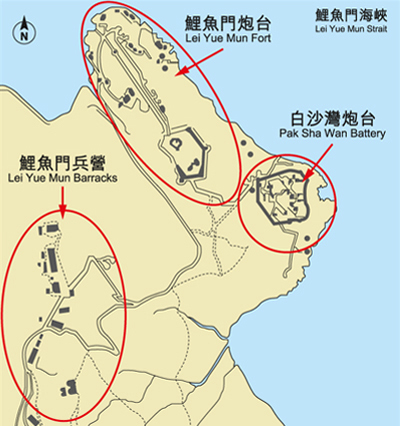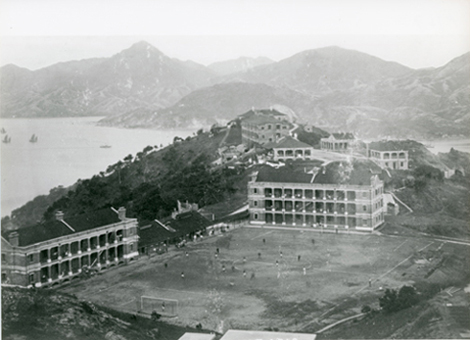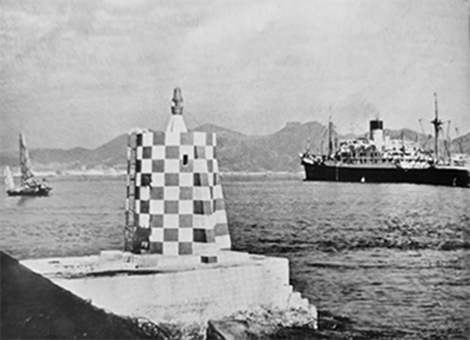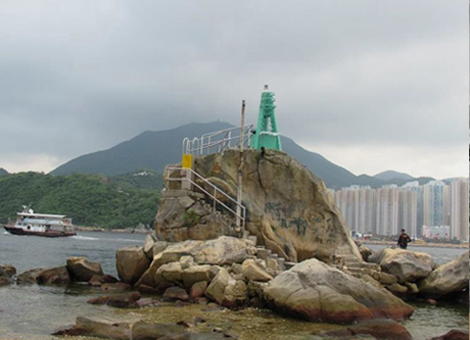Lei Yue Mun – Important Position for Hong Kong Coastal Defense
Coastal Defense Facilities
Lyemun Pass is an important strategic waterway for ships entering Victoria Harbour from its eastern waterway. In the 1880s, when France and Russia were expanding their power in East Asia, the British Army enhanced its coastal defense capabilities on both sides of Lyemun Pass, including the establishment of the Lei Yue Mun Barracks and Lyemun Fortas the eastern fortress of Hong Kong Island, to guard against potential threats to Hong Kong.
After the lease of the New Territories (including the area of East Kowloon) in 1898, the British re-registered villagers and surveyed land, during which “Demon Hill” was translated as “Devil's Peak” in English. Devil's Peak is located at the northern end of Lyemun Pass. With a height over 200 meters and overlooks the South Tathong Channel to the east, it is a suitable location to monitor vessels entering and exiting Lyemun Pass and was once a base for pirates. Due to its advantageous military position, the British Army constructed defense facilities on Devil's Peak. Among others, Gough Battery on its higher ground and Pottinger Battery on its lower position were completed in the early 1900s, while the Devil's Peak Fortress was completed in 1914. In tandem, the British Army established new facilities such as the Pak Sha Wan Battery and Sai Wan Battery at A Kung Ngam on the opposite shore of Hong Kong Island for the joint defense of Lyemun Pass.
The batteries on both sides of Lyemun Pass were abandoned after World War II. The military facilities on the Old Lei Yue Mun Barracks on Hong Kong Island and Devil’s Peak were accorded as Grade 1 and Grade 2 historic buildings in 2009 respectively by the Antiquities Advisory Board while Blocks 7, 10 and 25 of the Old Lei Yue Mun Barracks were declared as monuments in 2016. Parts of the Lei Yue Mun Barracks have become the Lei Yue Mun Park and Holiday Village, which have been opened to the public since 1988.
 Plan showing Lei Yue Mun defense facilities on Hong Kong Island
Plan showing Lei Yue Mun defense facilities on Hong Kong Island(around 1941)
(around 1941)
Lei Yue Mun Lighthouse
 The parade ground in Lei Yue Mun Barracks could also be used for soldiers to do exercise to keep fit in 1915. Block 10 of the Old Lei Yue Mun Barracks can be seen behind.
The parade ground in Lei Yue Mun Barracks could also be used for soldiers to do exercise to keep fit in 1915. Block 10 of the Old Lei Yue Mun Barracks can be seen behind. (Photo Source: Hong Kong Museum of History)
(Photo Source: Hong Kong Museum of History)
From this location, you can see beacon No. 88 (commonly known as “Lei Yue Mun Lighthouse”) which was established in 1902 and assists vessels navigating in and out Hong Kong in positioning, navigation and avoiding dangerous reefs. The lighthouse was originally an unlit beacon until navigation lights were added in 1924. The lighthouse was rebuilt in its current form in 1964. It is situated on nearshore reefs and can be accessed during low tide, making it one of the popular attractions in Lei Yue Mun.
 A steamship and a sailboat passed by the lighthouse on the southern
A steamship and a sailboat passed by the lighthouse on the southernshore of Lyemun Pass in 1954
(Photo source: Hong Kong Government Annual Report 1954)
shore of Lyemun Pass in 1954
(Photo source: Hong Kong Government Annual Report 1954)
 Lei Yue Mun Lighthouse
Lei Yue Mun Lighthouse